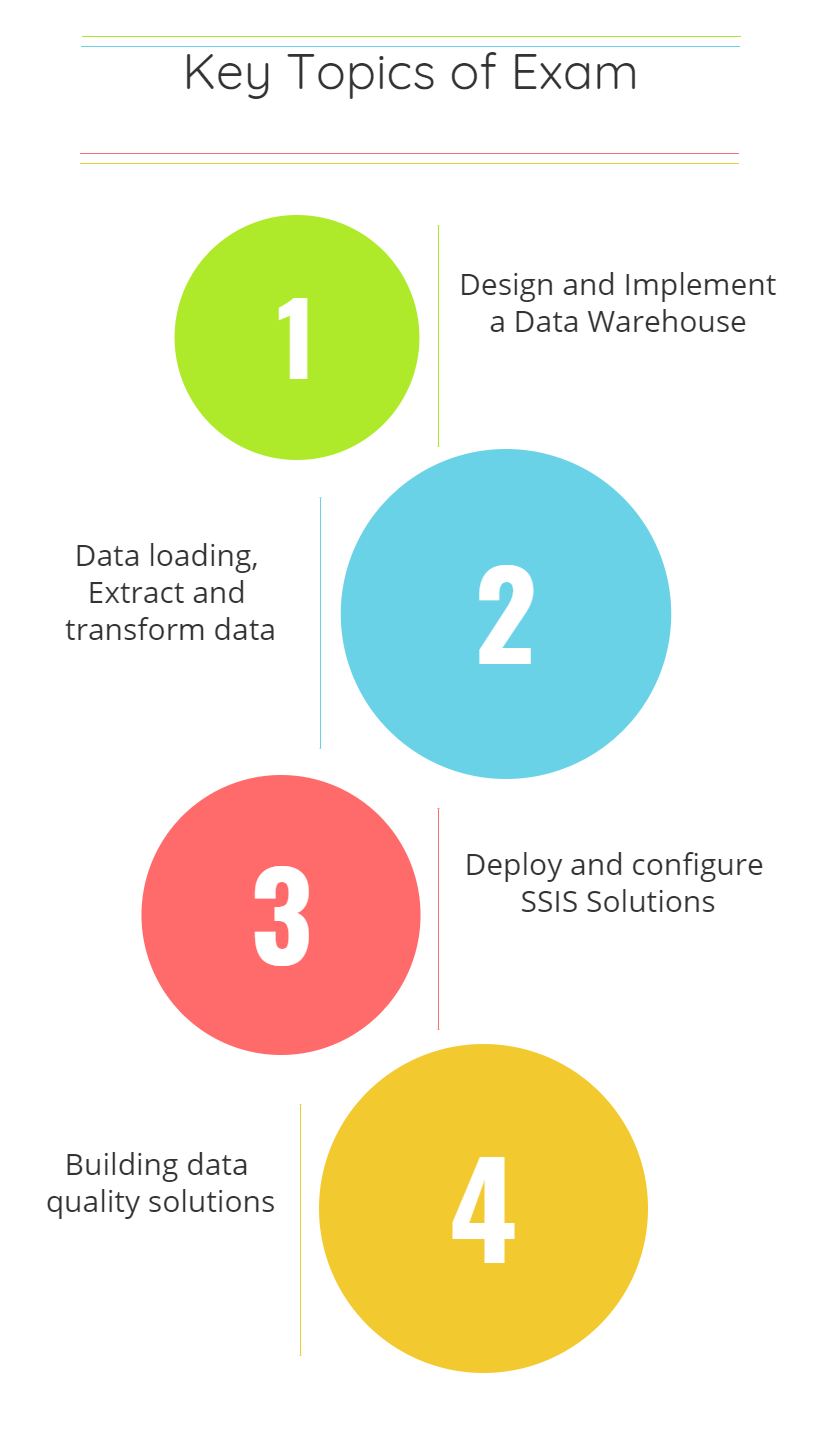An Introduction to Data Warehousing
In this module, while undertaking data warehousing projects one must take into account the key components of data warehousing and other high-level considerations of SQL Server.
- Overview of data warehousing
- Understand its basic architecture
- Understand the key elements of a data warehousing solution
- Describe considerations for data warehousing solution
Planning Data Warehouse Infrastructure
In this module, the delegates will identify the parameters to consider for selecting data warehouse hardware and distributing SQL Server facilities across servers.
- Considerations for Data Warehousing Infrastructure
- Data Warehouse Reference Architectures and Appliances
- Planning Data Warehouse Hardware
Design and implement Data Warehouse
The topic covers understanding about key factors for the logical design of data warehouse and then discuss best practices for physical implementation.
- Overview of Data Warehouse design
- Design dimension tables
- Design fact tables
- Physical design for data warehouse
- Design and implement effective physical data structures
Create an ETL solution with SSIS
This topic elaborates considerations for implementing ETL process and then focus on Microsoft SQL Server Integration Services (SSIS) for building ETL solutions.
- Understand process of ETL with SSIS
- Describe key features of SSIS
- Use SSIS for implementation of data flow
- Explore data sources
Implementing Control Flow in a SSIS package
In this module, the delegates learn how to implement ETL solutions that consolidate multiple tasks and workflow logic.
- Introduction to control flow
- Use of task constraints to execute control flow
- Develop dynamic packages including parameters and variables
- Use containers in a package control flow
- Techniques to manage consistency with checkpoints and transactions
Debugging and troubleshooting SSIS packages
This module discusses how you can debug packages to find the reason of errors occur during execution and also understand the logging functionality built into SSIS that can be used to log events for troubleshooting purposes. The delegates also get familiar with the basic approaches for handling errors in control flow and data flow.
- Describe Debugging of a SSIS package
- Logging SSIS package events
- Techniques to handle errors in SSIS package
Implementing a Data Extraction Solution
This module covers the techniques that can be used to perform an incremental data warehouse refresh process.
- Overview of Incremental ETL
- Plan data extraction
- Loading modified data
Loading data into Data Warehouse
In this module, the techniques used to implement data warehouse load process is covered.
- Plan data loads
- Use SSIS for incremental loads
- Use Transact-SQL loading techniques
Enforce Data Quality
This module covers Microsoft SQL Server Data Quality Services (DQS) and describes how it can be used to cleanse and de-duplicate data.
- Understand importance of Data Quality
- Overview of Microsoft SQL Server Data Quality Services (DQS)
- Using data quality services for cleansing and validating
Master data Services
This module describes how Master Data Services provides a way for organizations to standardize data and improve its quality, consistency, and reliability that helps in key business decisions. It also explains Master Data Services and its advantages of applying it.
- Introduction to Master Data Services concepts
- Implement Master Data Services model
- Manage Master data
- Create Master data hub
Extending SQL Server Integration services
This module covers the techniques to extend SSIS and also provide awareness of major steps required to use scripts in an ETL process and custom components based on SSIS.
- Include custom scripts in SSIS package
- Use custom components in SSIS to extend SSIS
Deploy and configure SSIS packages
The topics cover how to implement packages and their dependencies to the server.
- Describe key elements of SSIS deployment
- Deploy SSIS projects
- Plan SSIS package execution
- Monitor the implementation of deployed packages
Consuming Data in Data Warehouse
This module describes Business Intelligence solutions that data warehouse can use as a basis for enterprise and self-service BI lessons.
- Understand BI and common scenarios of BI
- Enterprise Business Intelligence
- Describe reporting
- Overview of data analysis
- Big data and Self-Service BI






